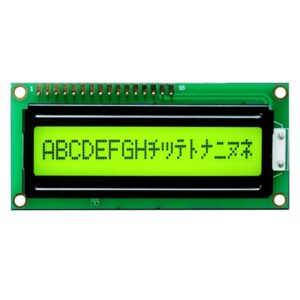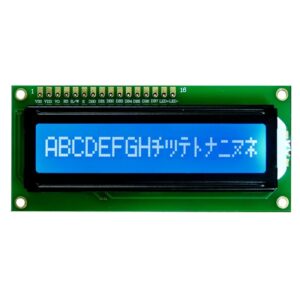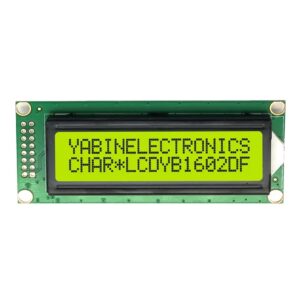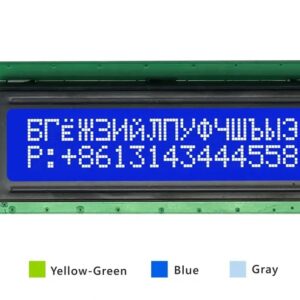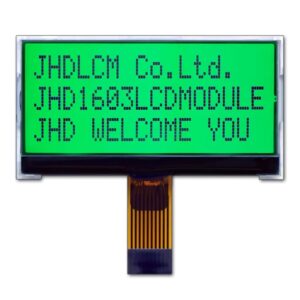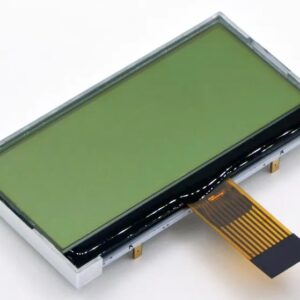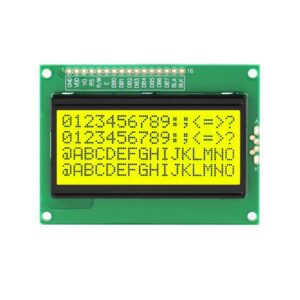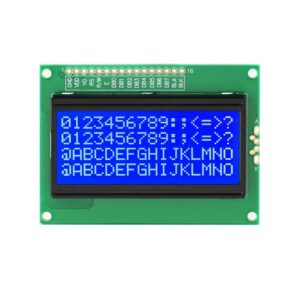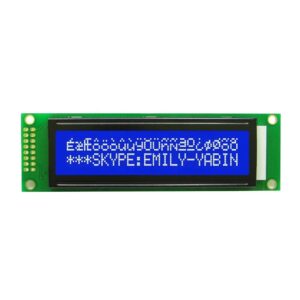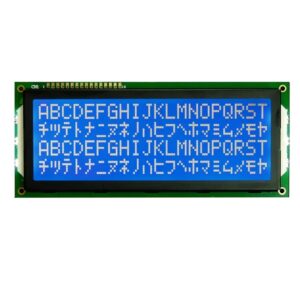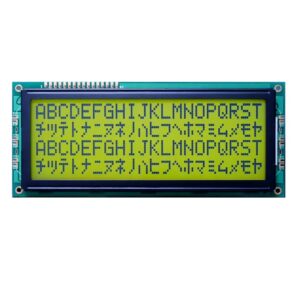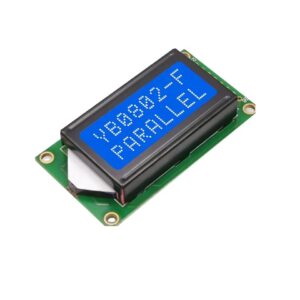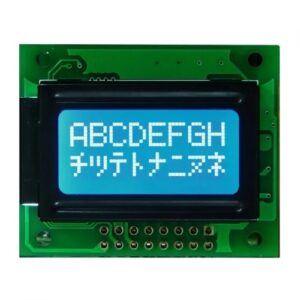LCD Character Displays
LCD Character Displays show letters, numbers, and a few symbols. They come in different screen sizes that display 8×2, 16×1, 16×2, 16×4, or 20×2 characters. Bigger screens with 20×4 or 40×2 characters are also available.
What should we consider when finding a perfect character LCD display for a project?
The things include the follow:
- Screen Size
- Character size
- Brightness
- Interfaces
- Contrast Ratio
- Screen Color
- Viewing Angle
- Durability
- Extra Features
Screen Size
After selecting the resolution, you need to choose the module size to fit your product. For example, a 16×2 character LCD has various outline sizes.
Also, package types include COB and COG. If no standard module size fits your needs, consider a custom LCD service that can provide a satisfying solution.
Character size
The character size determines how big the text looks. Common sizes are 5×7 dots, 5×10 dots, or 6×12 dots.
Larger sizes make the text bigger but require a larger screen. Choose a size you can easily read.
Brightness
They commonly have two types: reflective and backlight. Reflective character LCD can only see in brighter places with low prices.
In contrast, LED-backlit ones have a backlight to make them brighter and easier to read. However, they cost more. Backlight only matters if visibility is an issue.
Interfaces
LCDs connect using either an SPI interface with 4 pins for serial (RS, E, D, RW) or a Parallel interface with 8 pins for parallel (D0-D7).
Ensure the connector matches the component you want to attach to. Some also have I2C, a 2-wire interface.
Contrast Ratio
A higher contrast ratio produces darker blacks and brighter whites for sharper, higher-quality text. Typical ranges are 40:1 to 100:1 contrast.
More contrast means easier reading. If you need a better one, consider the OLED character screens.
Screen Color
Most character LCDs show monochrome green, yellow, black, or white text. Some support red, blue, or specific color text and background.
Limited color or RGB LCDs also exist.
Viewing Angle
The viewing angle determines how wide you can view the screen from the side before the text becomes unreadable.
Wider angles like 90-120 degrees allow viewing from more angles. Narrower 60-70 degree angles only permit direct frontal viewing.
Durability
Industrial lever screens can handle more impact and vibration. They are good for rough, industrial use, while regular LCDs suffice for desktop or indoor applications.
Extra Features
Additional features include programmable characters, custom text, adjustable contrast, and built-in I2C IC.
But that depends on your needs for a custom mono LCD service.
In short, consider screen size, character size, backlight, interface, contrast ratio, color, viewing angle, durability, and extra features to find the perfect one for your project.
Let me know if any is unclear or if you have other questions!

